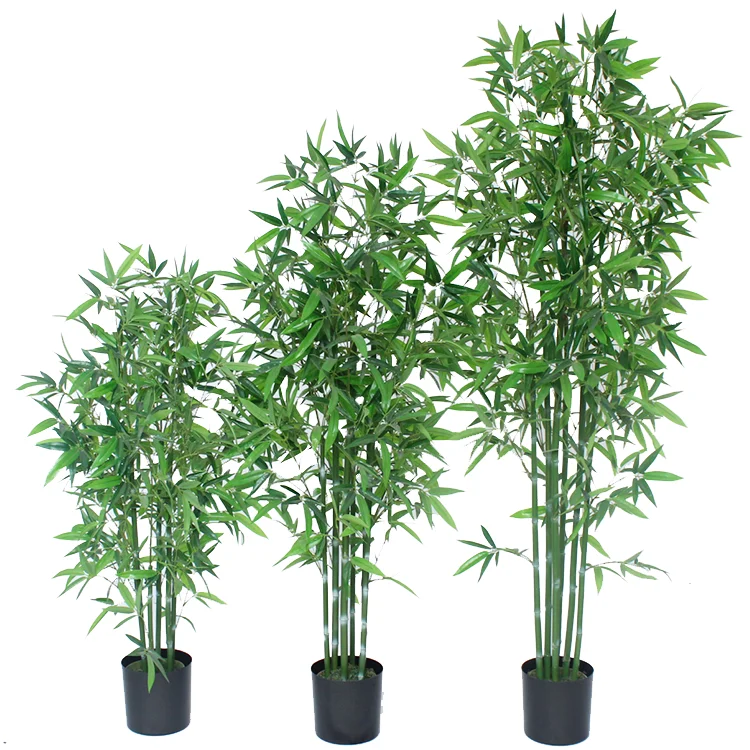Table Of Content
To put some water into the air, give the leaves a mist each day. When they are several inches high, John advises setting them separately in 4in pots of loam-based compost suitable for young plants, adding, by volume, a quarter-part grit. Harden them off and, when they have filled their pots with roots, plant them outdoors in fertile soil. As for water, bamboo likes to have a moist, humid environment, but it does not like to stay wet.
Common problems and solutions
How to Grow and Care for a Lucky Bamboo Plant - Martha Stewart
How to Grow and Care for a Lucky Bamboo Plant.
Posted: Wed, 04 May 2022 07:00:00 GMT [source]
Some bamboo species can grow well in water, while others prefer well-drained soil. Overwatering and underwatering can have similar symptoms, making it difficult to determine which issue is affecting your bamboo plant. • Using a well-draining soil mix that allows excess water to drain away from the roots.
Drainage

Bamboo, a symbol of strength, serenity, and resilience, is a great candidate for Zen. However, since growing true bamboo plants indoors can be challenging, bamboo-like houseplants make a suitable and effective alternative. These plants, including lucky bamboo, lotus bamboo, bamboo palm, and horsetail, evoke feelings of peace and relaxation, adding balance and a feeling of Zen to your space. It will therefore maintain its green color all year if you keep it indoors with lots of shade and moist soil.
Strategies for Maintaining Appropriate Moisture Levels
Though not giants of the jungle, they will grow happily in most gardens. Out of a hundred genera and 15 times more species of bamboo, at least one-fifth are “hardy,” coming from cooler climes where they can endure seasonal extremes of heat and cold. Cooler gardens will produce shorter, more refined but well-structured specimens. It can be grown indoors but requires bright light to maintain its dark colouration. Arrow Bamboo features tall, arching canes with lance-shaped leaves. It can grow quite tall, so it’s essential to provide adequate space if grown indoors.

Popular Locations
With its low-maintenance qualities, it’s an ideal option for beginner gardeners who are looking for an easy-to-care-for plant. Both lucky bamboo and heavenly bamboo offer unique benefits for indoor growing and can be a great way to add a touch of natural beauty to your home or office. Next, we’ll cover lighting, watering, and humidity – three key factors in bamboo plant care. Not only are they stunning to look at, but they’re also easy to care for and bring a sense of calm to any space.
Propagating Common Bamboo
In most species, seeds are set very infrequently and they aren’t easily spread, so keeping these plants in-bounds is purely a battle of gardener versus rhizome. With gregarious flowering, individuals of the same species distributed over a large area all flower simultaneously. After a single bout of flowering, fruiting, and setting rice-like seeds, the life cycle ends, leaving the spent bamboo plants to die en masse. Now that you’ve chosen the perfect companion, it’s time to set the stage and find the ideal spot for your green ally. In this section, we’ll explore the art of placement, blending Feng Shui principles with the creativity of indoor landscaping. These elegant, slender stems, often braided or twisted, are more than just ornamental.
Tulsi, lucky bamboo: 5 indoor houseplants that symbolise prosperity - Hindustan Times
Tulsi, lucky bamboo: 5 indoor houseplants that symbolise prosperity.
Posted: Fri, 16 Feb 2024 08:00:00 GMT [source]
Luckily several varieties of houseplants are so similar to bamboo that they are accepted as indoor-friendly bamboo alternatives. Alternatively, if you don’t have a green thumb but still want some bamboo greenery in your home, you can consider adding fake bamboo plants to your space. This plant is in a tiny dish or glass vase surrounded at the base by a few tiny stones. Among the different types of bamboo house plants, we have lucky bamboo. I’m interested to know which indoor different types of bamboo house plants are on the top of your favorite list.
Running Bamboo Plants
In addition, if you are a fan of Feng Shue, Bamboo will bring positive energy and good luck to your living house. While most types of bamboos thrive best outside, there are many bamboo varieties that flourish indoors as well. Given that you provide them with the right conditions and proper attention. Bamboo suffers from two recurring problems when planted indoors. In many cases, owners overwater their bamboo by putting water straight into the soil without giving the bamboo the ambient humidity that it needs to thrive. Bamboo should not be heavily watered via the pot, but it does enjoy a high level of humidity in the air.
With so many species to choose from, almost every gardener can find some Bambusoideae that’s suitable for their landscape. This allows you to easily observe and prune any rhizomes before they grow out of bounds. If you don’t want a gaping trench in your yard, you can fill it with loose material such as straw or sand that’s easy to move for root observation. Bamboo can really be transplanted at any time, save for during heavy frosts and freezes, or any time when the ground is frozen. Make your cuts in between the culms at the rhizome, and do your best to avoid unnecessary root damage. Prior to shooting out in spring, remove your specimen from its pot.
Some dwarf bamboo species can adapt to indoor conditions, but they may require more space due to their growth habits. Choose smaller varieties, and be prepared to provide adequate light and care. It can reach towering heights with large, woody canes and large leaves. Hence, if you have the space, it can be grown indoors in large pots as a large low-light indoor plant safe for cats.
Bamboo can be cultivated indoors, despite the fact that it is not often thought of as an interior plant. Yet, given how simple it is to cultivate and maintain bamboo, especially the clumping varieties, this shouldn’t be the case. Heavenly Bamboo is not a true bamboo but is often confused with bamboo due to its name. It has compound leaves with multiple leaflets and produces clusters of small white flowers and red berries.
But to avoid the problem from the get-go, make sure to provide decent airflow and avoid sprinkler irrigation. This might be worth it in the long run for keeping yields healthy and attractive, but it probably won’t be necessary for casual gardeners. Bamboo mealybugs can cause considerable damage, especially in new shoots, and large enough populations can kill an entire plant. Your adult culms should be safe – the young shoots are the most at risk. I’ve already mentioned a laundry list of animals that consume bamboo, such as pandas and mountain gorillas. You could also dig a trench around the perimeter of the planting area that’s about a foot or two deep and wide.

No comments:
Post a Comment